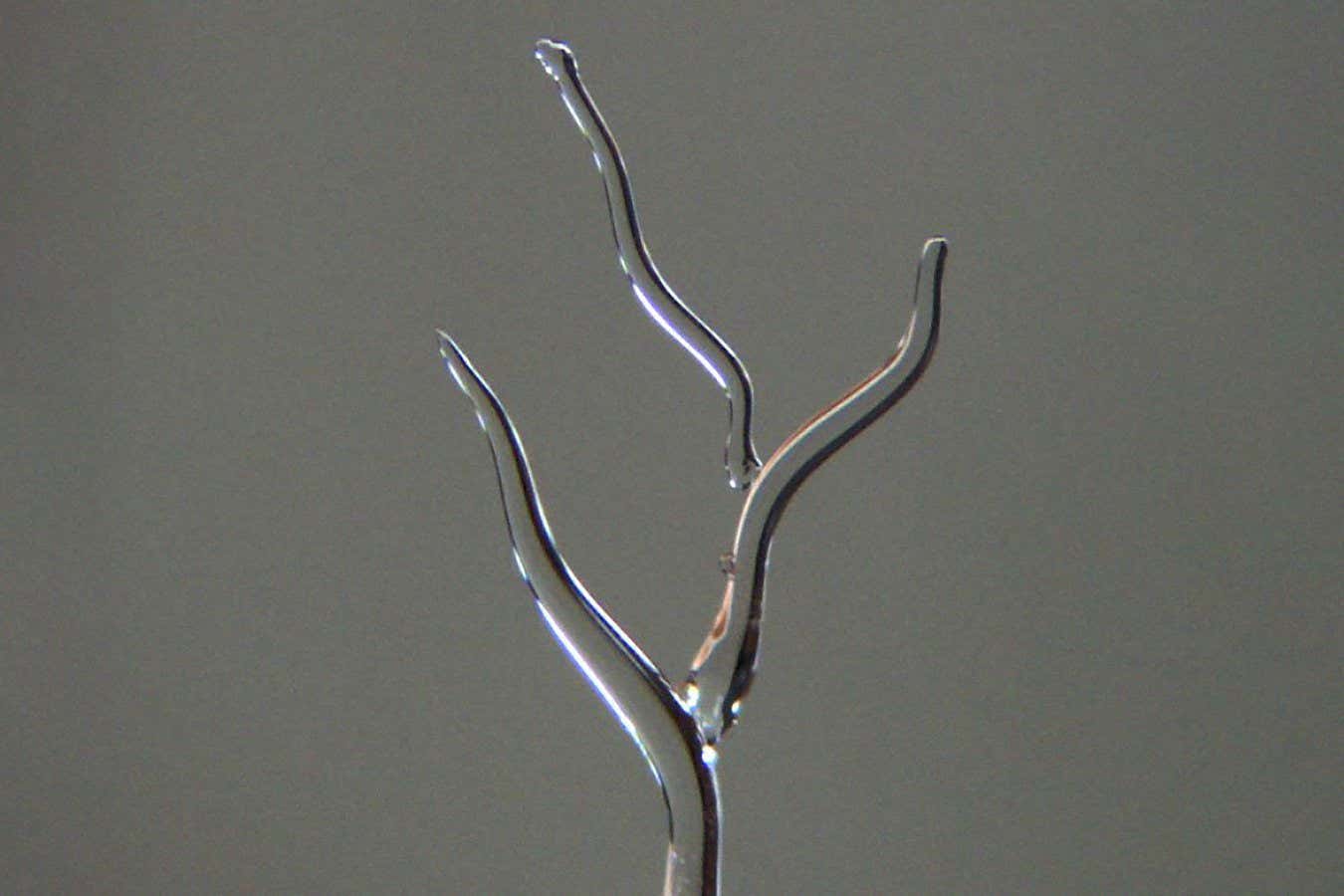Moulds of an organ’s delicate blood vessel network can be made with 3D-printed ice, helping to overcome the intricacies of growing transplant organs in a lab
By Matthew Sparkes
10 February 2024
A 3D-printed ice template of blood vessels
Philip LeDuc et al./Carnegie Mellon University
Complex artificial organs could be created by 3D printing a mould of veins, arteries and capillaries in ice, casting that in organic material and then allowing the ice to melt away, resulting in a delicate, hollow network. This leaves a space for the intricate artificial blood vessels that are required to develop lab-grown internal organs.
Researchers have been working on artificial organs for decades to help meet the high global demand for transplants of the likes of hearts, kidneys and livers. But creating the blood vessel networks needed to keep them alive is still a challenge.
Existing techniques can grow artificial skin or ears, but any flesh or organ material dies off if more than 200 micrometres from a blood vessel, says Philip LeDuc at Carnegie Mellon University in Pennsylvania.
Advertisement
Read more
Time to drop the outdated and unfair anonymity rule in organ donation
“It’s like twice the width of a hair; after you get past that, if there’s no access to nutrients, the cells start to die,” he says. Internal organs therefore require new processes if they are to become cheap and fast to manufacture.
LeDuc and his colleagues had experimented with printing blood vessels with wax that can be melted, but this requires reasonably high temperatures and can leave residue. “All of a sudden, one day, my student goes ‘why don’t we just use water – the most biologically compatible material in the world?’,” says LeDuc. “And I’m like ‘oh, yeah’. It still makes me laugh. It’s just so straightforward.”
